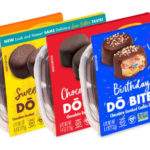Summer wouldn’t be the same without sweet and sticky ice pops! Store-bought varieties can be filled with high fructose corn syrup and artificial colors and flavors. Why give your family frozen treats full of artificial ingredients when you can make your own with real fruits?! These quick tips from Cooking Light will ensure your family is snacking on delicious and nutritious homemade ice pops all summer long!
Step 1: Strain Your Fruit
Using fresh fruit purees is the best ways to add natural sweetness, delicious flavor, and vibrant color to homemade ice pops! To get the smoothest, clump free texture, strain the puree through a fine-mesh sieve. Big chunks of fruit may freeze rock-solid and be too hard for your little one’s teeth.
Step 2: Colorful Layers
Layering your ice pops not only makes for a pretty presentation, but adds variety and fun with each bite! To create nice layers, begin with mixtures that have been chilled – so they’ll freeze faster. Make sure each layer is completely frozen before you pour the next one to keep the mixtures from bleeding into each other.
Step 3: Unmolding
There’s something so satisfying about sliding a homemade ice pop out of its mold. If not done right, your perfect pops can become a big icy mess! To make sure your ice pops unmold just right, submerge the mold halfway in warm water until the pops begin to release, about 20 to 30 seconds. If you want to snack on just one or two pops, wrap a towel dampened with warm water around the individual mold until the ice pop slides out nice and smoothly.
The Creative Kitchen™, LLC, teaches children about food and how to cook in a fun, safe, and educational manner. Targeting families with children ages two to teen, the company focuses on teaching, writing creative content and curriculum, special events, recipe development, spokesperson work, webisode production and consulting to present educational and entertaining content through food-related activities. The founder, Cricket Azima, is an expert in cooking for and with children. She inspires kids to express themselves creatively through food and cooking, while complementing lessons with traditional educational material such as social studies, math, arts, science, and more. Visit www.thecreativekitchen.com for more information.











